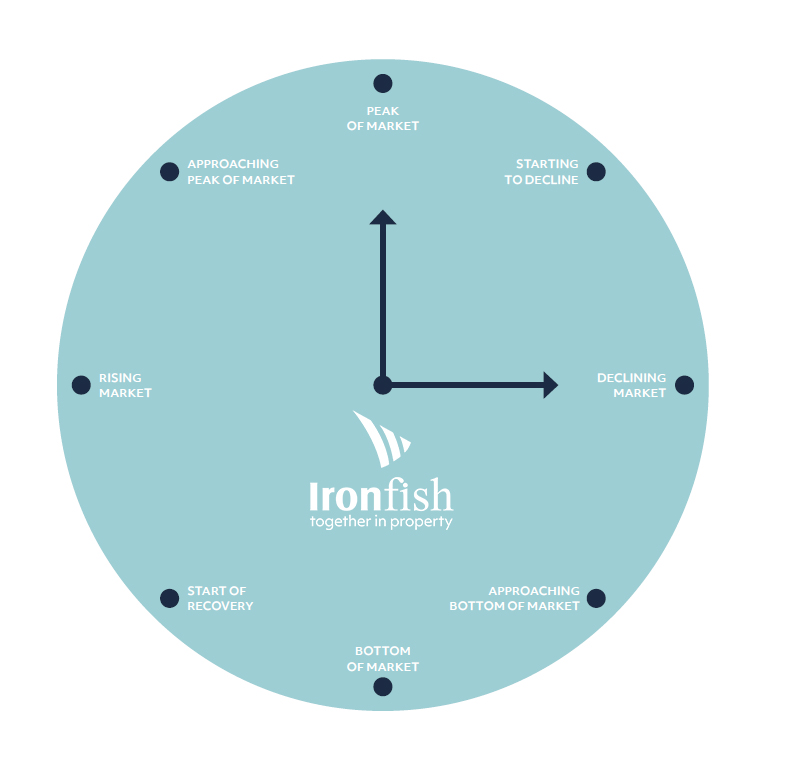If you’re trying to work out if now is the right time to buy or whether you should wait, here’s a simple guide to how the markets work, and the 5 key market indicators that can help you understand how the market is trending in your local city.
How do the property market cycles work in Australia?
In Australia, the property markets have typically worked in ‘cycles’, with an overall upward trajectory over the long-term.
A good way to picture this, is a clock: at 12-oclock is market peak – when prices are at their highest. At 6 o-clock is market bottom, with prices typically lowest at their cycle. In between, the two, you can see a rising market or a market correction.

Start Your Journey
Take the first step towards better results. Book your expert consultation today!
The 5 key property market indicators:
How can you tell if you’re in a rising or declining market? There are 5 key indicators that property market analysts use to understand where a city is at in the cycle and what trends you can expect to see.
- Property values – have prices been trending up or down?
- Sales activity – are people buying and selling or taking a wait & see approach? How are sales volumes and ‘days on the market’ stats tracking?
- Supply indicators – Is the market in oversupply or undersupply? How are building approvals and construction tracking?
- Vacancy rates – A balanced market will have a vacancy rate of roughly 3%. If there aren’t enough properties for renters, that figure will drop lower. Vacancy rates that are trending down are a sign of heating market.
- Buyer confidence – when prices have been low enough for a while, people feel confident to start buying again. Suddenly, the media headlines are overwhelmingly positive, and prices boom.
“Timing the market”: pros and cons
- Keep in mind, different cities can be at different points in the cycle at the same time – i.e. Perth can be up and Sydney can be down. Diversifying locations in your portfolio makes sense.
- You can still find a property in a declining market – each city has local markets, and particular suburbs can outperform others. You just need to know where to look.
- Look at other important ‘macro’ factors, such as population growth, infrastructure and economy of the city or location you’re looking to invest in.
- Investing should be for the long-term – which means that overall, the short-term ups and downs won’t impact you as much.
All that said, it makes sense to invest in property at the bottom of the cycle if you can, as there’s the greatest potential for growth within that cycle.
But this is often easier said than done, as you can only pinpoint the exact market bottom after it’s happened. Which is why most people don’t start buying until a boom is well underway.
As you can see though, without knowing the exact bottom, you can start to see clear trends that indicate a market on the rise.
And when you see those trends, while it might still be a little early to buy, it’s not going to be too late.
Our in-house research division:
- monitors the national markets for great up and coming locations
- finds great investment properties for our buyers in those locations
We can help you learn more at a free consultation with one of our experienced investment strategists.
Start Your Journey
Take the first step towards better results. Book your expert consultation today!